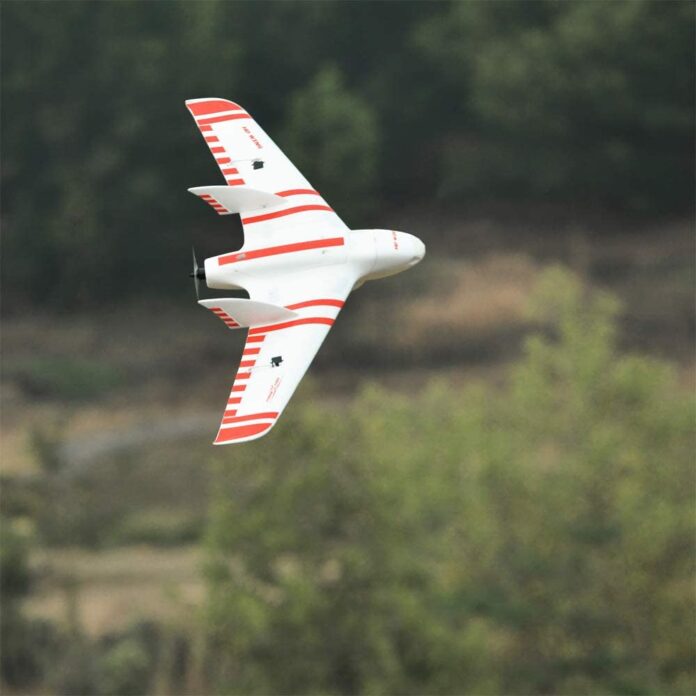A fixed wing drone can perform different tasks than quadcopters. Unlike quadcopters, a fixed wing drone can carry a beacon, a spraying device, or a carrying compartment. This type of drone can be used for mapping, surveying, and military applications.
Another reason to use a fixed wing drone is for the ability to carry cargo. Because fixed wing drones use forward momentum to fly, they can carry a heavier load. Because of this, batteries used to power quadcopter drones must be larger. But this can mean increased flight time.
Efficiency
A fixed-wing drone uses a single propeller for lift. A single-forward thrusting propeller is used to generate lift. A fixed-wing drone is more efficient than multirotor aircraft, making it ideal for long flights. “Considering the commercial application of UAVs, fixed-wing drones are effective to take vast-distance flights for a long time and at a high altitude. However, high performance is typical not for all of them, but for smaller UAVs only. If maximum take-off weight of a fixed-wing drone is more than 30kg, a pilot might face some problems because their UAV requires a catapult or hand-launch to take flight. This imposes tough restrictions upon the drone use without equipped airstrip,” Says Andrey Grudev, Deputy Director of Strategic Projects in Geoscan.
Compared to a conventional quadcopter, a fixed-wing aircraft can fly for hours on end. It is more efficient when you need to cover wide areas or long range, this is according to Gianni Baggio of UP – Caeli Via s.r.l. “Regardless the wingspan and payload capacity, a fixed wing aircraft will be always more efficient than a multi-rotor,” states Steve Wong, Marketing manager for ZOHD & Sonicmodell. “Fixed-wing UAV is considerably more efficient for long-endurance missions,” adds Aliaksei Stratsilatau, CEO at UAVOS. This makes it the most popular type of commercial grade aerial vehicle. Aside from being more efficient, fixed-wing aerial vehicles are easier to transport.
Benefits
In contrast to quadcopters, fixed-wing drones have longer flight times. They can be used for longer-range surveys. Their longer flight times enable them to cover large areas in one trip. “Long range deployment, all weather operation, payload capacity, higher top and cruise speeds/altitude, less noise are among the benefits of a fixed-wing drone,” adds Wong. The battery life is the most important feature of a fixed-wing aerial vehicle. Compared to a normal drone, a fixed-wing aircraft can fly for up to 50 km. A few models allow for vertical take-off and landing and have the ability to change directions. “Fixed wing use the power to keep the plane up by wings, so you can stay up more time with the same energy at disposal,” comments Gianni.
Unlike multirotor drones, fixed-wing aircraft can fly near the coast in conditions where a high-speed flight is dangerous. Besides, the drones are more stable than a commercial jet and can produce clearer imagery. If you want to fly your drone over a large area, it is best to get a Fixed-Wing Drone that can take high-speed photos and video.
According to Grudev, comparing fixed-wing drones with multirotor and hybrid VTOL aircrafts, the former differs higher energy efficiency as well as greater safety and reliability in case of single system failures. These advantages allow fixed-wing drones to fly much longer and cover much more ground. In addition, while carrying out aerial photography, UAVs of this type (especially electric powered) are characterized by relatively low airframe vibration, which has a positive impact on the data quality.
Suitability
A fixed-wing drone can be used for mapping. These aerial vehicles are more stable in windy environments. This makes them better suited for surveying windy areas. “Fixed-Wing aircraft is designed for surveillance, communications relay, and target indication. It is ideal for multispectral and radar monitoring of ground objects and marine areas, for cargo transportation to the areas where ground support equipment is required,” remarks Stratsilatau. Wong notes that, any missions where the distance/speed and altitude are critical, where you need to transport heavier payloads without much noise over rough terrain, Coastal/forest survey, Fixed-Wing drones are suitable for the job.
The take-off and landing area for a fixed-wing drone depends on the model and configuration of the unit. “Among application scenarios for fixed-wing drones with the take-off weight of less 30kg, are long-term surveying, monitoring of large areas and extended objects with almost all payloads (photo, video, multi- and hyper-spectral cameras, thermal imagers, ultraviolet cameras, Lidars, magnetometers, gas analyzers, gamma-ray spectrometers),” says Grudev. “Heavier UAVs can compete with manned aircrafts in delivering goods, especially in B2B commerce and within corporate application (for instance, an agriculture company can utilize drones to spray reagents),” he adds.
According to Gianni, a fixed wing drone is suitable for photogrammetry, surveying or delivery. However, fixed-wing aerial vehicles are more expensive than their multirotor counterparts.
The main difference between the two types of drones is their design. A multi-rotor drone can maneuver around buildings and map a large area. A fixed-wing drone can also fly long linear flight plans. Its maximum speed depends on the type of payload it can carry. If you’re looking to use a drone for inspection purposes, a Fixed-Wing model is the best choice.



